[ad_1]
Are you eager to see what terms could boost your overall traffic based on what people are really looking for on the internet right now? Google Trends is a great tool to help you perform keyword research — and it doesn’t cost you a dime! If you have been struggling to know what people are searching for, then you need to know how to pinpoint a Google Trend keyword.
From start to finish, this guide walks you through how to do your own Google Trends research to come up with a search term that speaks volumes to your audience.
Let’s dive right in!
What is Google Trends?

Many people haven’t heard of Google Trends, even though it’s a powerful tool to figure out trending searches that could factor into your search engine optimization (SEO). This free tool is offered by Google and helps define what people are looking for at any given time.
It shows you which search terms are hot at the moment, which ones are resonating in your local area, and even what search terms might become popular in the months to come. You can use Google Trends to find popular search terms rather than simply volume, as you would measure with other keyword research tools.
When it comes to keyword research, Google Trends offers everything you could possibly need to get started on a budget. Don’t underestimate it if you want to rank for a popular search term or bolster a keyword research process. Here are a few ways you can use Google Trends to conduct your own research.
Searching for Local Business and Terms
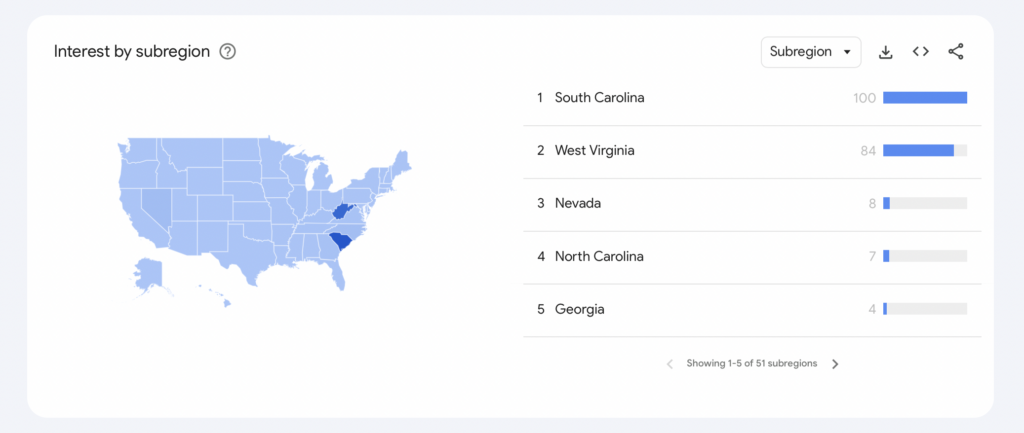
One of the best features of Google Trends data is that you can filter it by geographic location to find the search interest that resonates with your local audience. If you only serve a specific area (whether that is by state or by country), you can narrow down the results to just this area.
This guides your decision-making process about promotions and content that might resonate with your audience.
You can also use it to see what your competition is doing. You can compare businesses to see where you stand in the market compared to your competitors. This is a free way to see where you stack up against the other players in your market and help you refine what you do for SEO.
Organize by Time Period
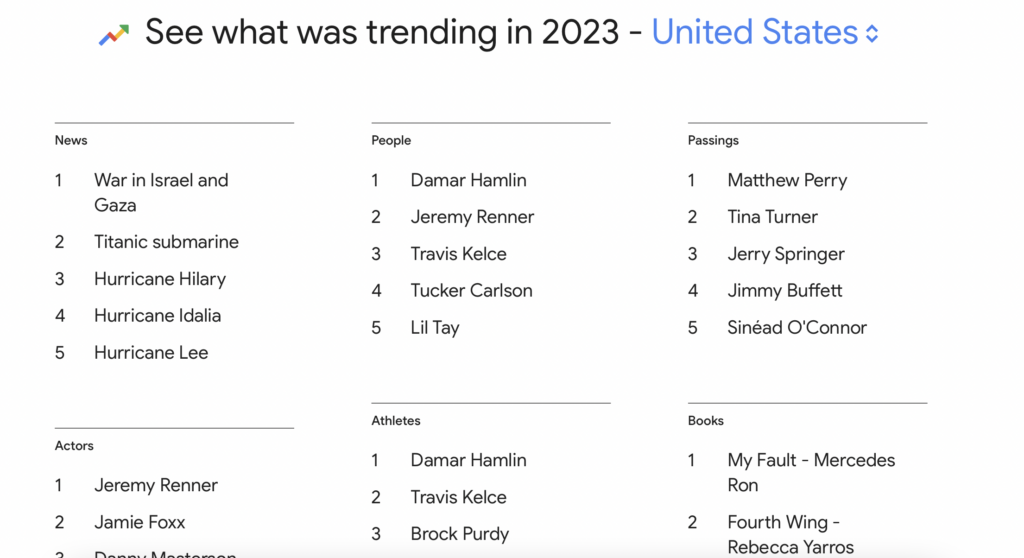
Trending searches vary with the season. For example, football might reach its peak search term when the Super Bowl comes around, while holiday decor is best served during the Christmas season.
You can see not only what is popular right now, but what is likely to be popular at a specific point in the year.
You can use Google Trends to see what was popular around this time last year by setting the timeframe. Another way to use it is to look for the search term you rank for and see when it reached peak searches during the past year. This can help you anticipate when to double down on your SEO efforts.
Comparing Keywords
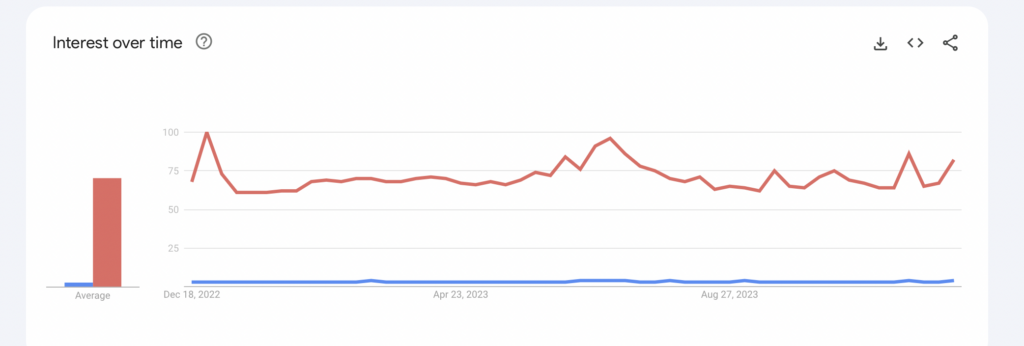
Not sure which keywords you should try to rank for? No problem!
You can easily compare several keywords to see which ones have the most trending searches for them before you start creating content. All you have to do is hit the Compare button and you will see multiple search terms show up on the same graph. It makes keyword research easier than ever before!
How to Filter Search Terms by Spelling and Punctuation
There is some science behind using Google Trends for trending keywords. They have lots of hidden tips and tricks to help you get the exact results you want from your web search. Here are a handful of lesser-known ways you can filter your search queries.
- Add term in quotes: searches for exact phrases but may include words before or after
- Terms separated by + sign: searches for a term containing either word
- Terms separated by a – sign: searches for terms without the second phrase following the sign
You can also use your Google Trends search to include alternative spellings (or misspellings). Simply add each spelling separated by the + sign to get these thrown into your real-time search trends data.
How to Harness Google Trends Data for Your Keyword Research
While it may not yield the same results as Google Keyword Planner (or Google Keyword Planner alternatives), Google Trends can help you pinpoint the keywords you need to target as well as related queries for a blog post or marketing endeavor. Here are a few tips you can use for a web search
Finding the Perfect Google Trend Keyword Right Now
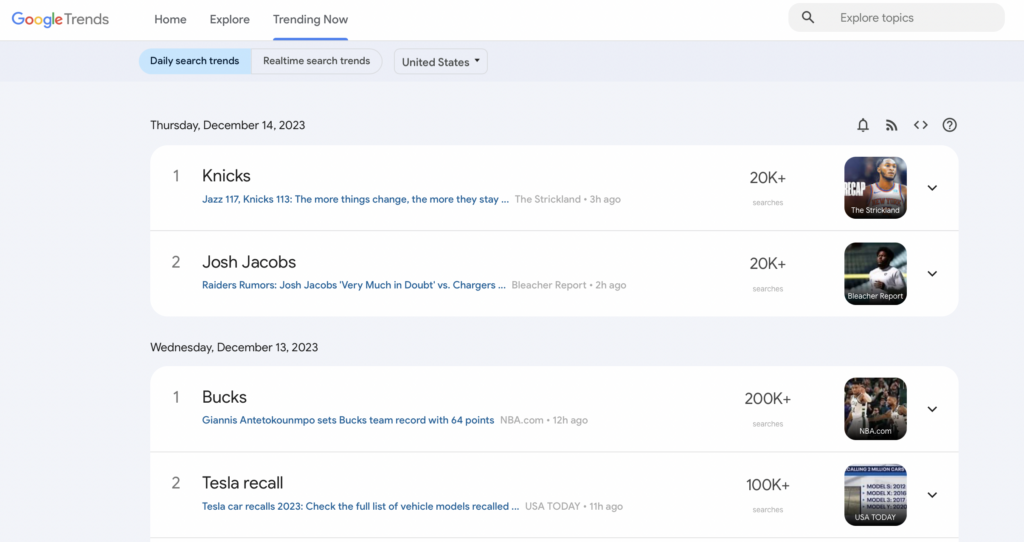
From the Google Trends homepage, you can see what is trending all over the internet in one quick glimpse. All you have to do is select the tab for “Trending Now” at the top of the page. It will pull up a long list of the most popular items on a Google Trends search right now.
Keep in mind that this may not target your geographical region if your business is more localized. Instead, it’s a great way to look at the internet as a whole for things that could appeal to your market.
If you want to see how Google Trends shows new items and increased search frequency, you might want to see the section below on Google Alerts for hot new information on the market.
Use Historical Data for Seasonal Trends
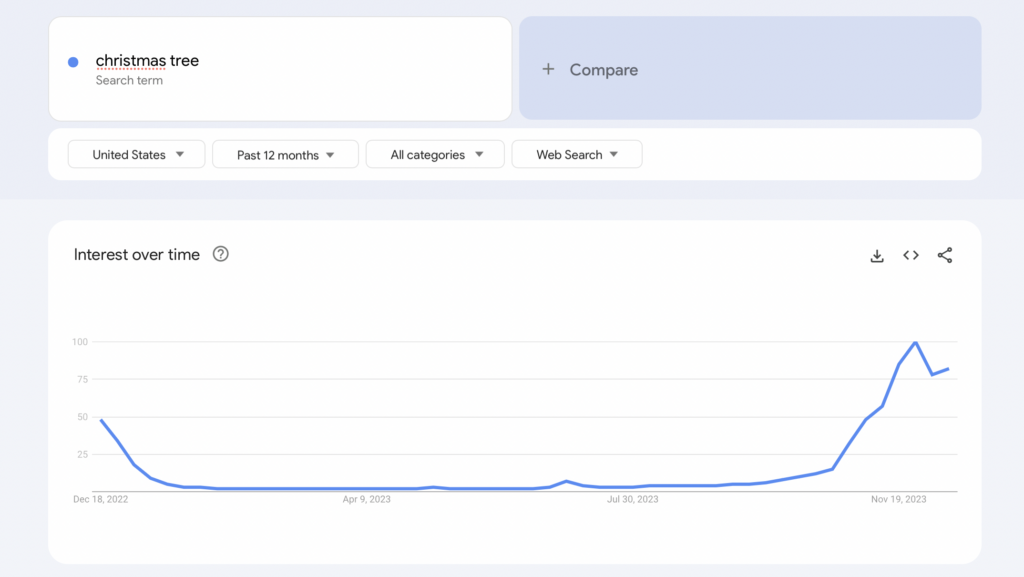
Do you want to know when you should start marketing seasonal items or services? Figure out when people start searching for the terms that describe your business by setting the historical data for an entire year. You’ll quickly see the spikes of activity that represent more people tuning into your content.
This is the time when you should plan on ramping up your blog post strategy and marketing efforts so that you are top of mind when they are ready to buy.
This allows you to create an annual plan that meets the needs of your audience in every season. Most businesses have seasonal trends, so make the most of this by monitoring search results for yours and related topics.
Find Related Topics and Related Queries for More Details
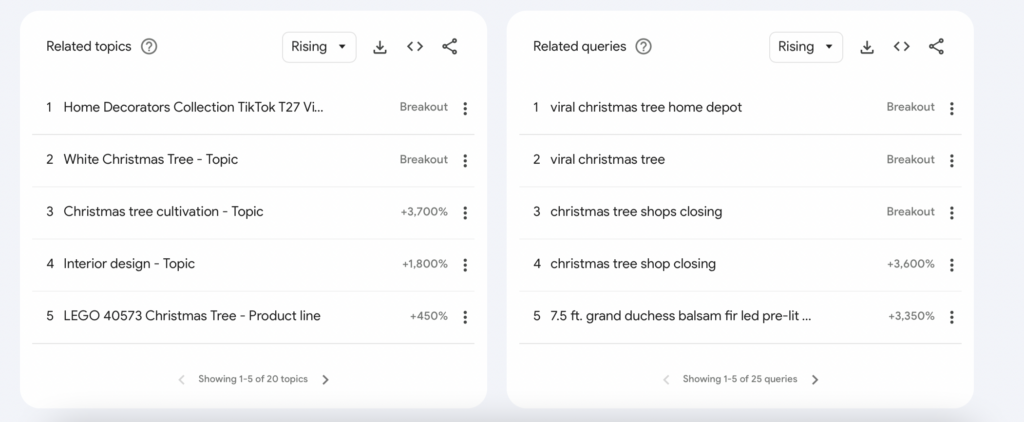
In addition to direct searches for your trending keywords, you can also see what related queries people are interested in seeing. You will find that there is a “related searches” category that can give you more insight into the intent behind your keyword research.
When would you use these related queries, and how would they bolster your content marketing?
They might give you more ideas for your blog posts, social media posts, and even the categories of items that you want to sell in your e-commerce store. Gaining insights into the search trends on Google shows every business how you can improve your relative popularity, boost eyes on your content, and improve your overall standing.
Locate Local Search Trends and Monitor Competitors
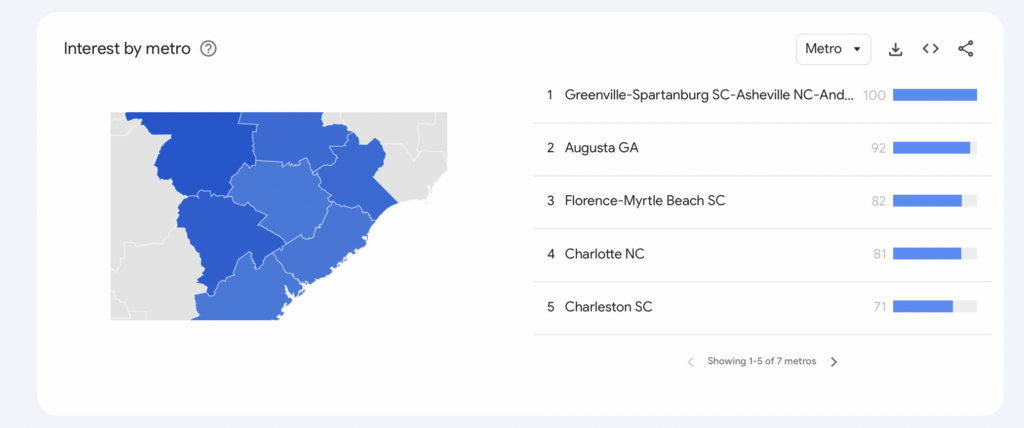
The overarching search volume on Google might not give you the exact results that impact your local business. They might not help you at all, even if they do have great search volume. For example, sports teams are often trending searches, but this may not do you any good if you don’t sell memorabilia or blog about the latest wins and losses of your favorite team.
Instead, you can narrow down the Google Trends data to just your local area. See the search results by state or country to find the perfect Google Trend keyword that will define your business.
You can even monitor competitors via this tool. Type their name into the search bar and then add your own using the “Compare” feature. This will show you both trending searches on the same graph so you can see when you (or your competitors) are doing the best year-round.
Use Google Trends for Categories
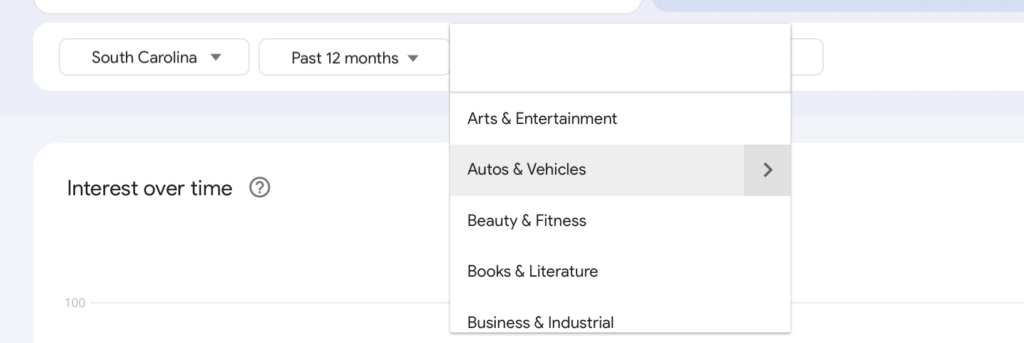
Maybe your niche is a little broader, and you just want to see what’s trending within a specific industry. The good news is you can do just that with the Categories function. Almost any category you can imagine is an option on Google Trends, including:
- Arts and Entertainment
- Books and Literature
- Business and Industrial
- Finance
- Real estate
- News
- Online communities
- And more!
This is a great place to see related queries in your industry and to nail down a new Google Trend keyword for your brand. It might come back with Google searches you had never even thought of before, giving you the push you need to create content for a new customer category or to sell a new type of product in your store.
Use Google Trends for Other Properties (YouTube Search, Google Shopping, & More)
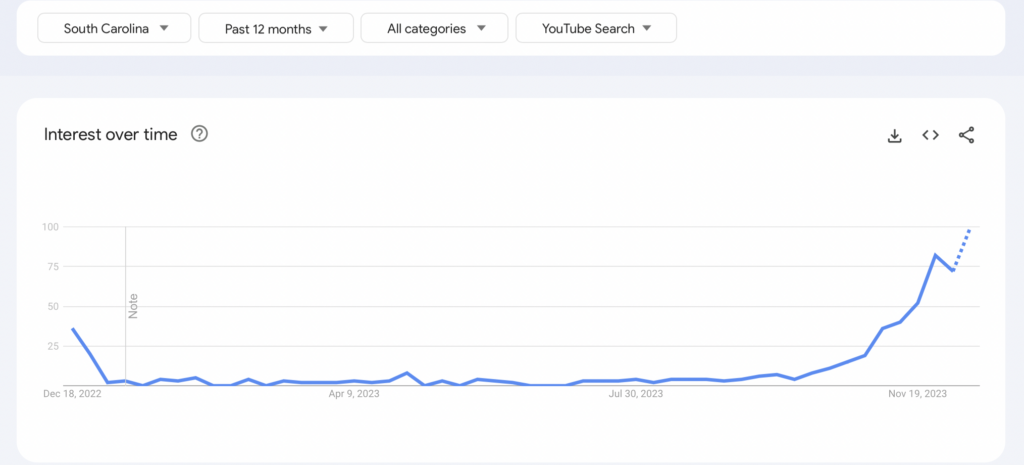
Of course, you might need to narrow down your keyword research to properties other than a general Google search. Savvy Google Trends users know they can mine this data for other properties that might have a more lasting impact on their content marketing strategy.
Other categories beyond Google that you can mine for keyword ideas include:
- YouTube search
- Google shopping ads
- News stories
- Image search
This should give you an even better idea of daily search trends that cross over to your specific area of business. Whether you are a content creator or you want to market a news website, using Google Trends helps you get to the bottom of related search queries.
Excluded Data for Google Trend Keyword Research
While there are lots of benefits to finding search queries with Google Trends, there are also some times when data might be excluded. Most significantly, it will not register keyword popularity when it comes to searches made by only a handful of people. Instead, it focuses on popular keyword search volumes and will display low search interest as zero.
This could be problematic for very niche sites or extremely local services that have fewer searches.
It also does not allow for duplicate search queries because it can skew the accuracy of the results. While you can still access those results, keep in mind that they may not be 100 percent up to date if you recently made the same search.
It also does not include special characters (including apostrophes).
Set a Google Trends Alert for Your Search Interest

If you want to capitalize on search volume as it takes place, using Google Trends has never been easier. Instead of entering your desired phrase every day to see the traffic, you can trigger a Google Alert that will help you create content that resonates at the perfect time.
Choose whether you want to see the hottest, hotter, or simply hot search queries. When a new topic pops up that might be of interest to you in a specific category or geographic location, Google will ping you with an email that shows you the overall search volume.
This can be used to clue you into major current events that could impact your industry. Opt for either a daily or a weekly email (or receive multiple emails a day as new keyword ideas are added to your targeted list). It won’t bother you every single time something goes up or down, just when a new item is added.
Final Thoughts: How to Find the Right Google Trend Keyword
You know you need to find keywords that will resonate with your audience and allow you to create content that converts to sales. A Google Trend keyword can help you to do just that by showing you the overall search volume for keywords you have been considering targeting.
This can help you decide when to funnel money into Google ads and when to double down on your content marketing strategy. With real-time search trends right at your fingertips, you’ll never have to guess again when it comes to keyword suggestions and search traffic!
[ad_2]




